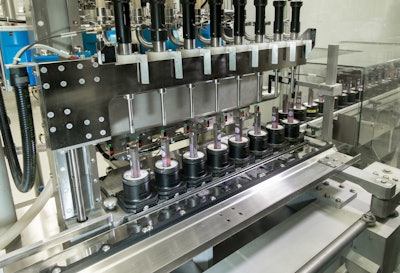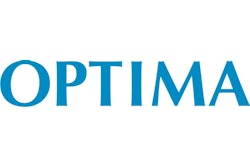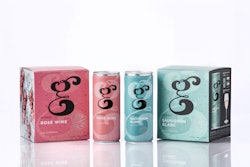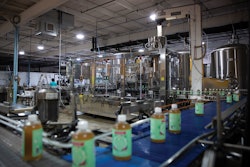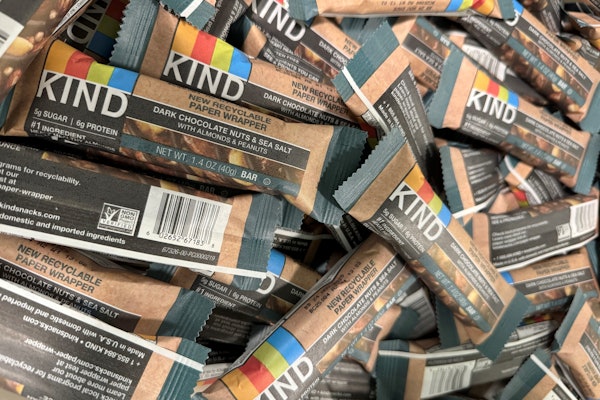If you frequently stay in hotels, you probably have used a guest amenity product from ADA Cosmetic GmbH. You may not have realized it though, because the variety of labels and products produced by the Kehl, Germany-based company is almost as wide as your choice of hotels.
ADA was founded in 1979 as a single-source supplier of cosmetics and toiletries for hoteliers, providing products such as shower gels, shampoos, conditioners, body lotions, and creams. The company offers a range of services, including product development, contract manufacturing and packaging, and marketing, among others. Says the company, “As an ardent innovator and technology leader, our company is well known for its ambitious research and development efforts and state-of-the-art production technologies.”
ADA’s customers range from small, family-run hotels to big hotel chains as well as private-label brands, all looking for customization in a range of run lengths—a typical demand for the hotel cosmetics market.
To meet the wide variety of requests and increase its capacity, in 2014, ADA sought new packaging equipment that could handle both tubes and bottles and offered quick-changeover features and flexibility for different package sizes and shapes. The solution was Optima Machinery’s Corp.’s modular Moduline filling/sealing system.
“We started a tender, and Optima had the best concept,” says Torsten Peschel, Chief Production Officer for ADA Cosmetic GmbH. “In fact, it was the only supplier that was willing to develop a machine able to run both tubes and bottles. The price-performance ratio convinced us too.”
Cost-efficient customization is key
As noted, the hotel cosmetics market is driven by the need for customization, but cost-efficiency is imperative. Although the market is dominated by medium-sized European suppliers such as ADA, various Asian companies are exerting strong pressure on prices.
When it comes to ADA’s customers, the big hotel chains purchase huge quantities. “In this case, you are calculating precise unit costs as small as one-quarter or one-eighth of a cent,” says Peschel.
These large chains also sometimes want to break down a large order of several different types of products to allow for specific branding and/or regionally specific color and fragrance combinations. And, of course, all the products come in different containers.
For smaller, family-run hotels the story is a bit different. These hotels want to offer their guests something special. For example, a hotel seated at the base of an Alpine forest may want a fragrance that reminds hotel guests of this nearby pine woodland. In this instance, ADA can customize the color and fragrance of the product as well as design a package for the product with a custom shape, closure, and graphics.
ADA’s range for hoteliers also includes licensed products from big, internationally renowned perfumeries and couturiers as well as a comprehensive range of private-label brands.
The end result is an immense variety of products with very small lot sizes, which ADA must produce while maintaining competitive pricing. Packaging container trends have also had a significant influence on this need for flexibility. According to Peschel, tubes are in particularly high demand at the moment. However, he adds, this could change again at any time.
So, what does a system that is mainly used to package ever-changing orders from a handful of major customers, but that also needs to be suitable for short runs, look like? One thing is certain: The system needs to be as flexible as possible and achieve an acceptable output. It also has to have a high filling accuracy and the ability to run self-sufficiently for long periods of time with little operator interaction.
Advantages of custom system
One of the benefits of Optima’s modular machine building concept versus classic machine building is that Optima can custom-design specific new modules to meet a customer’s individual needs. Among the notable features of the Moduline filling/sealing system for ADA are its large component-supply buffer magazine for empty packages, its Clean-in-Place functionality, its quick-changeover features, its accuracy, and its ability to keep packages upright throughout the entire process.
According to Peschel, the buffer magazine is the “key feature” of the system concept that makes it a perfect fit for ADA. “Without the buffer magazine, the system just wouldn’t meet our needs,” he says.
The large component-supply buffer magazine handles up to 24 cases of empty tubes or bottles and allows the machine to run self-sufficiently for 30 minutes to an hour, depending on the package format. At the machine infeed, operators place open cases with upright containers into the elevator-style buffer magazine. The cases are brought from the magazine individually and are presented to a robot that picks the empty tubes, row-by-row, and places them into pucks for transport into the filling/sealing system. After the working case is empty, the magazine is signaled to bring another case to the robot. In parallel, the empty case is automatically broken down for recycling.
As regards the CIP system, it meets the hygiene requirements for the products by automatically rinsing product from the machine, disinfecting the equipment, and rinsing off the disinfectant—a process that requires far less time and fewer personnel than manual cleaning. Moreover, the CIP process can be initiated prior to the end of a batch, during production.
Ultimately, flexibility means maximizing uptime wherever possible. During a format change, the clock stops after the CIP system has completed running—approximately 40 minutes, depending on product—and a new product can be run at the push of a button.
Changing the inserts in the nearly 450 transport pucks during a format changeover is a little more time-consuming. Because it was not cost-efficient for Optima to include an automated puck-changing solution in the filling/sealing system for ADA, it developed a second set of pucks. In this way, preparations for a major format changeover can be made during the previous production run.
Says Peschel, the quick changeover of the machine gives ADA an important competitive edge: “Whereas our competitors can only supply customized products starting from a quantity of 50,000, we can do it from only 10,000.”
Even though the vast majority of ADA’s production is focused on tubes, Peschel says an additional benefit to the investment in the Moduline is that the machine is not limited to just one container type. Because of this, ADA has the option of processing bottles and jars, if needed. It also allows ADA to offer a full range of package options, including closures such as screw caps, flip tops, and those with applicators, containers of various heights and with different contours, and opaque or transparent labels. ADA currently runs tube sizes from 19 to 30 mm dia (10 to 125 mL), but the Moduline can handle diameters up to 50 mm for tubes and 100 mm for bottles.
Finding the Moduline as efficient for long runs as for short ones, ADA has used the equipment to produce lot sizes of more than 500,000 pieces. As for speed, the machine offers a continuous output of 200 tubes/min up to a filling volume of 125 mL, and an output of 125 bottles/min.
Helping ADA control costs, the Moduline’s electronic mass flow-metered (MDM) dosing system fills shower gels, creams, shampoos, conditioners, or body lotions “with extreme precision,” says Peschel. He adds that some of the products are very expensive and that, with tightly calculated prices, the company cannot afford to give away one or even half a milliliter of product per container.
Another important advantage of the system for Peschel is its upright processing capability, whereby once tubes are sorted, the packing configuration of the products remains the same right through to the shipping case—a feature not possible with a classic tube filler. “This was really a precondition we wanted to meet with this project—to package all tubes in an orderly arrangement,” he explains. ADA’s field sales staff see it as an important mark of quality that customers find a well-sorted, orderly arrangement of products when they open the case.
Machine operation start to finish
Alfred Weihbrecht, Sales Director Cosmetic Solutions for Optima Consumer GmbH, describes operation of the Moduline after cases of empty tubes are presented to the machine:
- A six-axis robot picks 16 tubes (two rows of eight) from the case and inserts them in two steps into the transport system, which is equipped with format-specific pucks.
- Tubes are lifted and rotated, after which they are decorated with pressure-sensitive labels.
- An eight-head MDM filling system fills the tubes. Fill weight is controlled by a checkweigher that is linked with the filling system to continually optimize the precision of each individual pump.
- Tubes are rotated for sealing. To determine correct orientation of the tube, a camera identifies a small square printed on the label. Optical sensors and machine control determine to what degree the tube needs to be oriented. Explains Weihbrecht, “The orientation of the printing and the sealed seam have to be harmonized.”
- At the next station, tubes are heated and sealed.
- After the tube is cooled, the seam is cut, and a batch number is added.
To ensure maximum uptime, ADA installed a remote maintenance module from Optima for online diagnostics. With the service, a modem is installed in the machine. In the case of a process fault, the machine control can be connected via the modem directly to the service department at Optima. “The connection has to be actively authorized by a responsible person at the customer’s site,” says Weihbrecht. “It is protected in several ways, including a password and firewalls.”
With the information provided by machine control, the service team can locate the fault. Explains Weihbrecht, sometimes simple advice from the service team—for example, “there must be a problem with the water infeed”—can help ADA operators solve the problem. Other, more complicated faults can be simulated in the service department with special equipment.
Project satisfaction
After three years of running the Moduline, Peschel says ADA is “very satisfied” with the reliability of the system. “This was a development project, and we knew we would run into some problems the first year. But they were all solved—no ands, ifs, or buts,” he says, adding that the system currently runs with more than 90% efficiency.
“The Moduline has all the features I envisioned in the project planning phase. The system has proved that it can do what was promised. The initial troubles we experienced and may still experience are tackled without delay, and a solution is found. I can only describe our collaboration as positive and enjoyable. We are impressed by the accuracy of diagnostics via the remote maintenance function, and the overall process runs like clockwork.”
ADA is so pleased with the system, in fact, that it has ordered a second Optima machine that will fill product dispensers for hotels. According to Peschel, flexibility is just as important with this application, as ADA will be filling different dispenser systems. “The goals are to increase capacity and boost efficiency,” he says. “Currently we have mono-format systems. The new equipment will process four different formats.”
